Powerful, larger-than-life nude sculptures; World War I uniforms hanging from a pipe; plaster dust, clay models, pencils, couches and books. To walk into Sabin Howard’s Bronx studio is to enter the workshop of a master sculptor who is also a relentlessly hustling, entrepreneurial artist.
Howard, who grew up in New York City and Torino, Italy, is considered the foremost practitioner of, and authority on, modern classicism. His sculptures are modern and forceful, yet their anatomical accuracy and sensual beauty harken back to the Renaissance and ancient Greece.

Howard is currently enmeshed in the greatest and first public commission of his life―creating the National World War I Memorial with his design partner, wunderkind architect Joe Weishaar. The monument will stand in Pershing Park in Washington D.C. and is expected to cost $30-$35 million. It is being funded by the World War I Centennial Commission and private donations.
For Howard, creating a monument of this scale is a dream come true. Yet the sculptor will be the first to say that dreaming alone never gets an artist anywhere. Nor, in his opinion, does the gallery system. Howard has chosen, instead, to be an independent artist/entrepreneur, marketing his work directly to clients who commission him to create magnificent sculptures, and developing many additional ways to create income with his art.
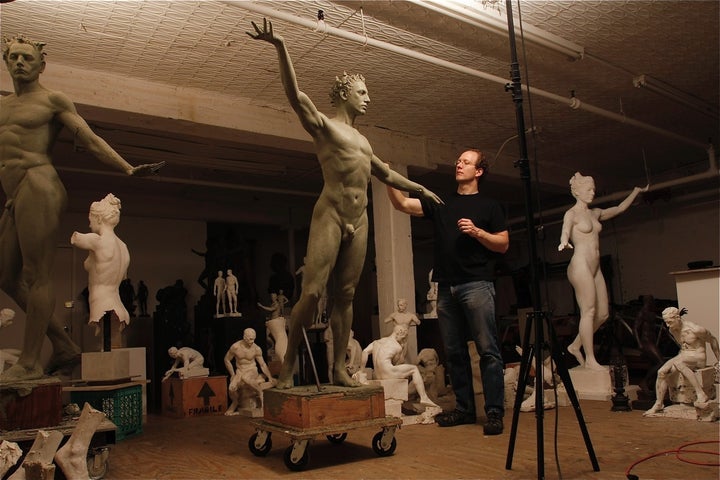
“I have long admired Sabin Howard’s get-up-and-go approach to both art and life,” says Fine Art Connoisseur editor-in-chief Peter Trippi. “He works in an artform that is infamously expensive, technically complicated, and administratively byzantine,” Trippi adds, “but through sheer talent and stamina, he pushes forward through it all and makes his great art happen. I am excited to watch Sabin’s World War I project unfold, and I am quite sure the public will love it.”
Howard began his artistic career at The University of the Arts, whose provost, Stephen Tarantal, notes that Howard is “an incredibly gifted figurative sculptor whose inspired and masterful work powerfully evokes timely and timeless big ideas that humanity continuously ponders. The surfaces of his sculptures are lively and vigorous, giving the work its energy and spirit. The presence of Howard’s work fills and activates the space it occupies, and communicates a sense of certainty, clarity, and complexity in a subtle nuanced manner.”
I spoke with Howard in his studio for an enlightening look into the career of a Renaissance-inspired artist with a decidedly 21st-Century approach to his career.
Steve Mariotti: Why did you develop an interest in classical art, and were able to fuse it with a modern sensibility?
Sabin Howard: I’m bi-cultural. I was born in New York but three months later my family went to live in Italy. My first language was Italian and my first memories are of Torino. I wouldn’t be making this kind of art if I had not been exposed to Italy’s visual beauty and great art.
I was taught to respect tradition. Yet, I also grew up in New York in the ‘60s, where I was exposed to counterculture, outside-the-box thinking. If I had been raised exclusively in Italy, I wouldn’t have been exposed to American culture and free enterprise. I wouldn’t have been able to support myself as an artist and create my own business. I wouldn’t be thinking “Yes I can.”
I’m playing forward an age-old artistic approach that is our birthright, which is the human figure expressed in a positive way―not in a degraded way―with elegance and grace stemming from the Classical Greek period. The template I follow as an artist is also similar to what went down several hundred years ago during the Renaissance, when artists like Michelangelo and Da Vinci were creating their masterpieces. It’s about uplifting and transforming the human spirit through art.
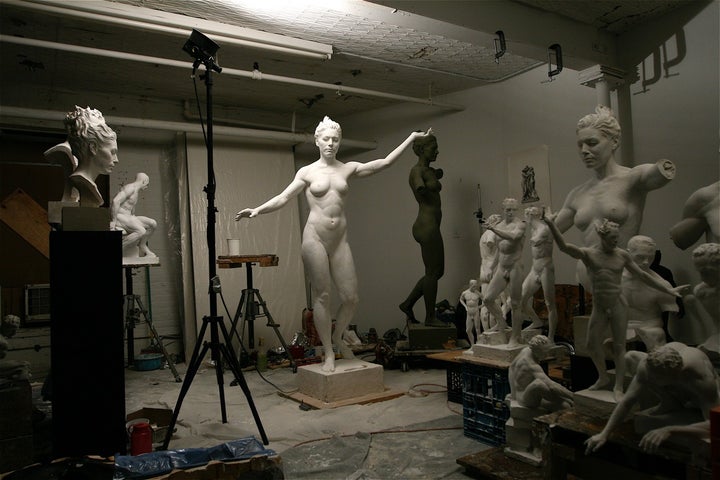
On the other hand, my business model is very different from the traditional model most artists follow. I represent myself. I have my own PR department, which is my family. My wife, Traci L. Slatton, is a novelist who collaborates with me on books like The Art of Life, which explores the history and value of figurative sculpture. When I give a webinar, she helps promote it and acts as my tech person. We are constantly creating our own opportunities, instead of expecting someone else to do that for us.
Steve Mariotti: How did you begin your career?
Sabin Howard: Since my parents are historians and teachers, it was expected that I would go to college. I dropped out after a year. I had aspirations to make Renaissance art but didn’t know where to begin. In 1982, after four days at a furniture restoration job in South Philly, I quit and decided to go to art school.
I called The University of the Arts in Philadelphia. The lady who answered told me to bring in a portfolio. I didn’t know what a portfolio was so she invited me to her office. I walked over there immediately. She told me to get the book Drawing on the Right Side of the Brain by Betty Edwards. I got a construction job doing framing and I drew every night.
After three months I had ninety drawings, which I brought to her. She pulled out ten and said, “These are very good and show tremendous promise.” Turns out she was the director of admissions!
The school had an amazing figurative art department. It was the only place in the country where you could learn the structural approach used during the Renaissance. I also apprenticed with an artist who worked in churches around Philly. I spent from 1982 to 2015 learning my craft, including two years studying in Rome and also at New York Academy. I began doing private commissions, and started teaching.
About a year and a half ago, I decided I wanted to do public works. I entered my first competition—for the World War I memorial—and won. This is a monster project—it’s epic!
Steve Mariotti: How did you come to manage your own artistic career?
Sabin Howard: Early on, I stepped away from the gallery game. I’d get to the table with a gallery owner and he’d hand me a contract and I’d look at him cockeyed, like are you stupid? Because you’re looking at me like I’m stupid. You want me to take that percentage?
I did the math and figured I’d be earning around eleven dollars per hour. When I showed my math to these gallery owners, they said “We’re trying to help you.”
I said, “You’re not helping me. I’ll go to McDonald’s and make eleven bucks an hour.”
When artists do not believe in their self worth, they can be taken advantage of in this way. Nobody else would take the bad deals that artists take. I know what I do is valuable. If you don’t want to pay me, I’ll find someone who will.
When you accept the consequences of your choices, then you’re OK. I accept that nobody’s going to take care of me, and that I must be financial responsible for myself. That’s a consequence of my choice to become an artist in a society where art is not valued as legitimate or necessary.
Steve Mariotti: How did you create a viable business with your art?
Sabin Howard: I’m constantly thinking of ways to use my craft to create multiple streams of income. I started teaching Skype lessons and webinars, and private classes to individuals. I started writing books, collaborating with my wife. I did lots of private sculpture commissions. I made and sold multiples of my sculptures.
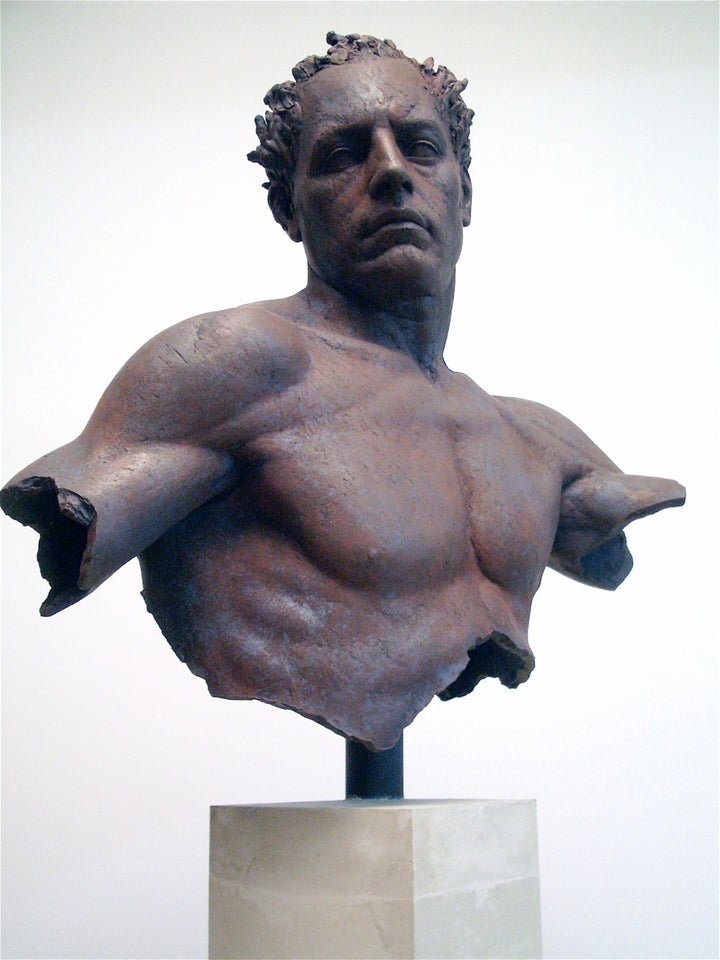
Now that I’ve been drawing so much for the memorial, I’ve started a printmaking business. I’ll make twenty-five prints of a drawing and sell those for around $1500. I also use my work to barter. I barter art with my dentist, my doctor, my accountant.
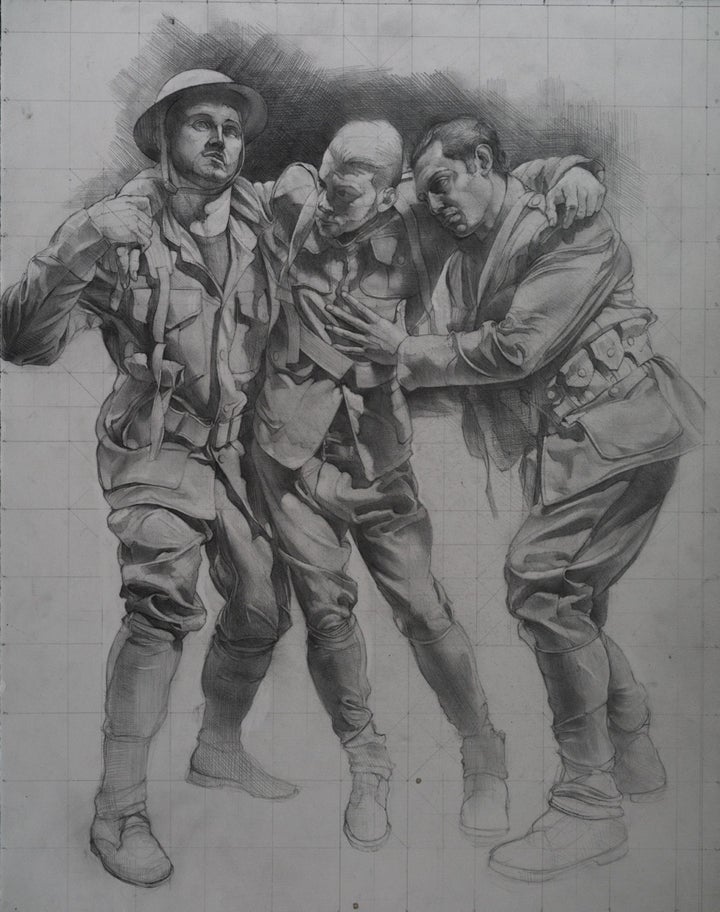
The only thing that’s constant in my career is change. You constantly have to reinvent yourself and move forward—like Madonna! You must accept that you’ll get a lot of resistance and you’ll feel a lot of fear. Just deal with it. The people who’ve accomplished the most –Steve Jobs, for example – have persevered in the face of tremendous resistance.
Artists, for the most, part are missing a cog or two. They get so hell-bent on making their art that they forget that our economy is not a meritocracy. You have to create a business model for your art or no one will ever see it, no matter how great it is.
I don’t sit back on my heels and contemplate how great my art is. I’m a consummate hustler – in a good way. I go out and meet people and do everything I can to fulfill my vision for my art. I don’t expect them to come to me.
I learned all this the hard way! As an artist, as you work on your craft, you must also work on your inner state. I’ve done a tremendous amount of psychological work in order to be able to do what I do.
Steve Mariotti: Do you estimate your costs so you can figure out what to charge in order to earn sufficient profit?
Sabin Howard: Yes, I estimate by months. I know I can do six-foot sculpture in 10-14 months. I know what my monthly nut is and I know what my expenses are at the foundry. Then I’ll add 20% for problems and 40% for taxes.
Business and art are not separate. Thinking they are is a fallacy in many artists’ thinking. Business is creative, too. You will make mistakes and you may fail, but if you learn from your mistakes and don’t repeat them, you will make progress.
Steve Mariotti: Is there a political aspect to your art?
Sabin Howard: Not really. In my 81-foot relief for the World War I memorial there are close to forty figures…and only three guns. I’m seeking to express inter-connectedness and unity among human beings in this work, not “how great America is.” If there is a political idea I care about it, it is self-responsibility. I believe strongly in that.
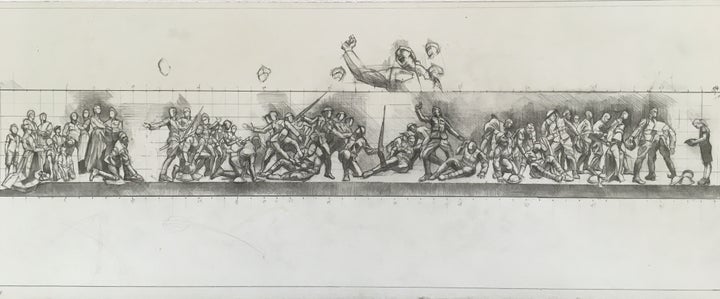
Steve Mariotti: Do you think artists would benefit from financial literacy or business training?
Sabin Howard: Probably, but ultimately it’s up to the individual. This country is so full of opportunity. If you read and you investigate, you can form an intelligent opinion on how to proceed toward your goal.
Steve Mariotti: How do you see your life as an artist five years from now?
Sabin Howard: I’d like to develop a higher level of sustainability in family, art and finances. That’s the trifecta. I would hope to have the power to play forward the message that art should be valued for its artistic merit, not only for its financial worth. This needs to be re-integrated into the art world and our society. That’s why I’m doing the World War I memorial. It gives me a platform to play that forward.
Steve Mariotti: Who are your favorite artists?
Sabin Howard: Michelangelo and Leonardo DaVinci, for very different reasons. I admire them both for financial and business reasons, and also for spiritual and artistic reasons. Everything we know about Michelangelo is based on his bills, payments to his workers, letters to the popes. He was dealing with exactly the same issues I’m dealing with now. Things were not so smooth then, and they’re not so smooth now. I’ve been reading about how he proceeded in order to gain insight into how I should proceed. It’s fascinating!
Steve Mariotti: What is your advice for a young artist?
Sabin Howard: This is a very painful profession. First, you must make sure your art is completely superior to the product created by your competitors – that’s how you differentiate yourself and proceed financially.
Secondly, you must work on your mind and physical body. I had a back problem twenty years ago, so I started doing yoga. I need to keep my back healthy or I can’t do my work.
You must discipline your mind, as well, because being an artist can be very stressful. You can either learn to be at peace during a stressful situation, or become a drama queen and explode the situation. Your mind is your most powerful weapon.
Finally, you need must come up with a financial strategy. Where’s your cash flow coming from? It might not be from your art yet. You could get a job waiting tables at a nice place, make a decent income, and still have five to six hours per day to do your art. You could squeeze in thirty hours of work a week on your art.
It’s not going to be easy but it can be done, if you’re serious about your art.
